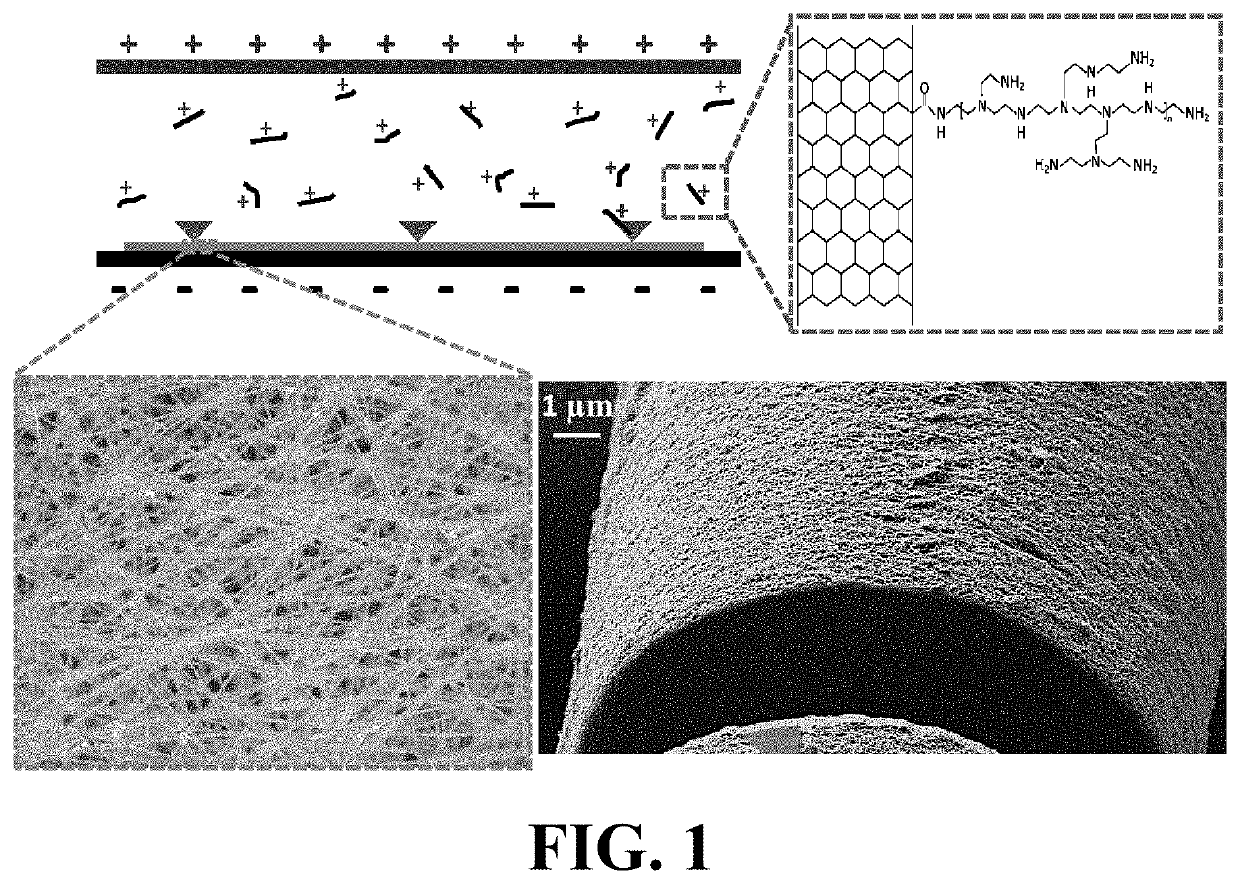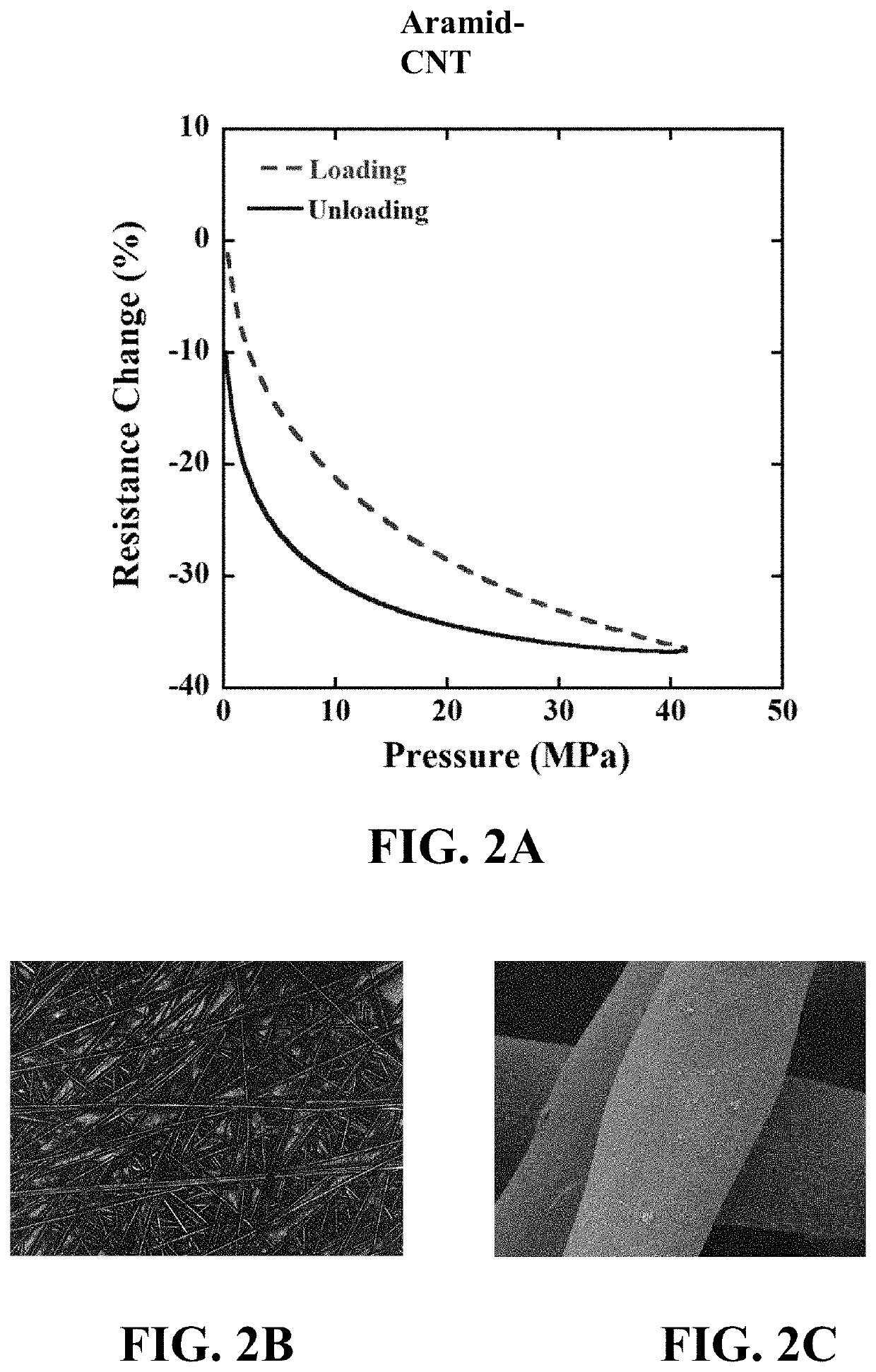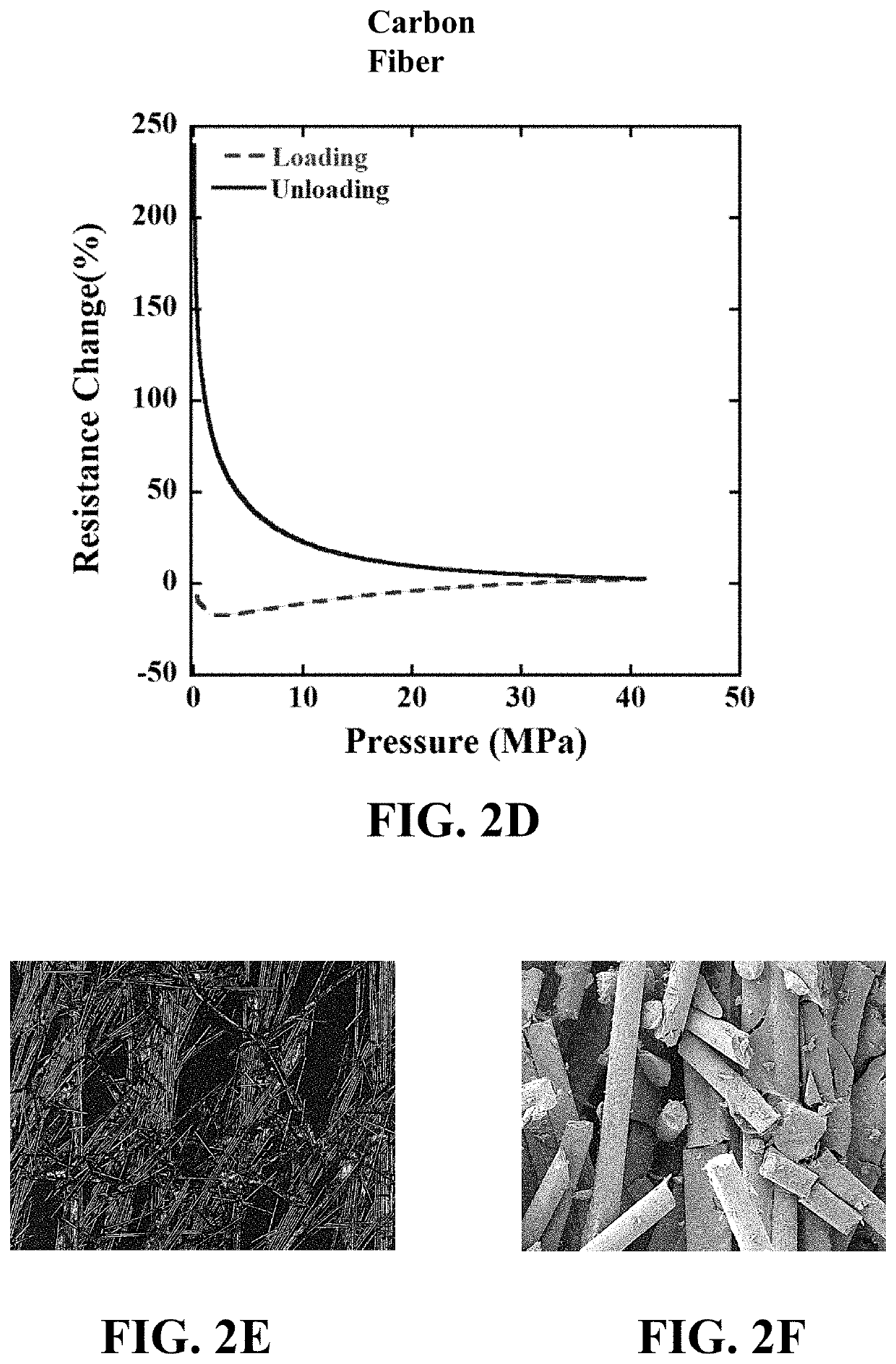Carbon Nanocomposite Sensors
a carbon nano-composite and sensor technology, applied in the field of piezoresistive sensors, can solve the problems of difficult use of many conventional pressure sensors in these applications, and many limitations of laboratory-based systems for monitoring human motion
- Summary
- Abstract
- Description
- Claims
- Application Information
AI Technical Summary
Benefits of technology
Problems solved by technology
Method used
Image
Examples
example 1
notube Coated Fabric-Based Thin and Flexible Pressure Sensors with Ultra-Wide Sensing Range
[0110]This Example demonstrates a first aspect of the invention. Specifically, it demonstrates the fabrication and testing of a piezoresistive sensor made by an electrophoretic deposition process onto nonwoven aramid fibers. The resulting sensor was integrated into footwear and used to analyze and corroborate the forces involved in walking.
[0111]This example focuses on the development and validation of novel flexible piezoresistive sensors that can be integrated into functional fabrics and footwear. Formation of thin nanocomposite films of electrically conductive carbon nanotubes (CNTs) using a scalable electrophoretic deposition (EPD) technique enables the sensing functionality. Films in the range of 250-750 nm are created on a variety of natural (cotton, wool) and synthetic (aramid, spandex) fibers using the EPD process. In this embodiment, non-woven aramid fabric with randomly oriented fibe...
example 2
nsitive Carbon Nanotube Based Sensors Using Everyday Fabrics for Human Motion Analysis
[0125]This Example demonstrates a second aspect of the present invention, namely, the fabrication and testing of highly sensitive, comfortable to wear sensors to measure a range of human joint motion. A dip-coating technique is developed to produce a thin nanocomposite coating on a commercially-available knitted fabric. The fabric sensor is then integrated into an elbow sleeve and the sensing response under elbow motion is examined.
[0126]Analyzing human motion is becoming increasingly important for patients requiring rehabilitation and athletes to improve performance. Motion capture cameras, currently used for human motion analysis are prohibitively expensive and complicated to use. There exists a critical need for developing innovative and cost-effective techniques to analyze motion outside of the laboratory. In this work, low-cost and comfortable wearable sensors can be created by coating everyda...
example 3
notube Coated Textile Sensors with Ultrahigh Sensitivity for Human Motion Detection
[0134]This Example demonstrates a third aspect of the instant invention. Specifically, we demonstrate a novel processing technique to create thin conductive films of carbon nanotubes on knitted fabrics to create flexible stretch sensors which are breathable, light-weight, and comfortable to wear. The sensing response is characterized using simultaneous mechanical and electrical characterization. Proof-of-concept is demonstrated by integrating the sensors in a knee sleeve and measuring the sensing response with knee flexion.
[0135]Highly sensitive stretch sensors are developed by coating knitted fabrics with carbon nanotubes. An innovative electrophoretic deposition approach is used to deposit a thin and conformal carbon nanotube coating on a nylon-polyester-spandex knitted fabric. The carbon nanotube coating is chemically bonded on the surface of the fibers and creates an electrically conductive networ...
PUM
| Property | Measurement | Unit |
|---|---|---|
| thickness | aaaaa | aaaaa |
| thickness | aaaaa | aaaaa |
| thickness | aaaaa | aaaaa |
Abstract
Description
Claims
Application Information
 Login to View More
Login to View More - R&D
- Intellectual Property
- Life Sciences
- Materials
- Tech Scout
- Unparalleled Data Quality
- Higher Quality Content
- 60% Fewer Hallucinations
Browse by: Latest US Patents, China's latest patents, Technical Efficacy Thesaurus, Application Domain, Technology Topic, Popular Technical Reports.
© 2025 PatSnap. All rights reserved.Legal|Privacy policy|Modern Slavery Act Transparency Statement|Sitemap|About US| Contact US: help@patsnap.com



